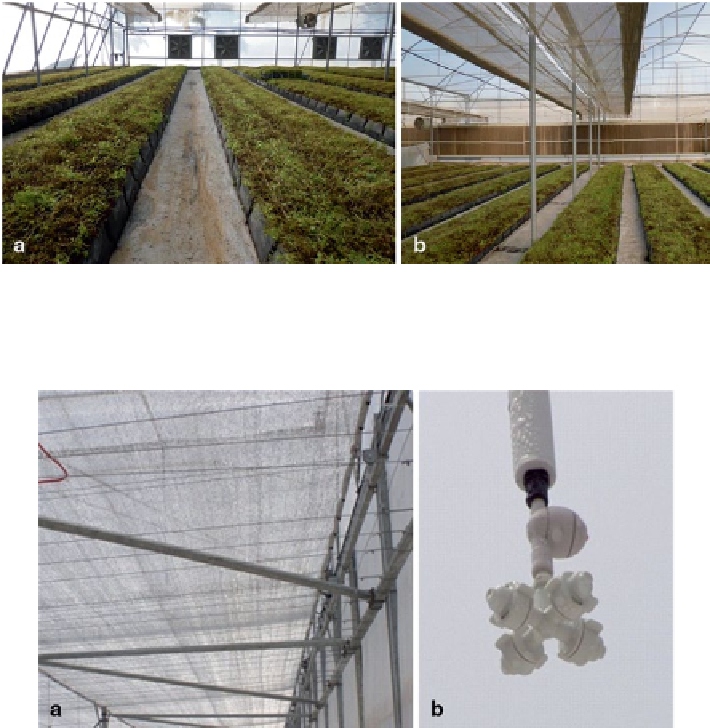Agriculture Reference
In-Depth Information
Fig. 10.6
A negative fan and pad cooling system:
a
fans installed on one sidewall of the green-
house, and
b
wet pad, installed on the opposite sidewall in a greenhouse at The Jordan Rift Valley.
(Source: Gruda 2012, private collection)
Fig. 10.7 a
The aluminized shade system (Aluminet 60-I, 60-64 % shade, Polysack Plastic Ind.,
Nir-Yitzak-Sufa, Israel) installed at a height of 4.5 m.
b
The mist system designed using high-
pressure foggers (Micronet 4-Way Fogger, 30.6 L. h
−-1
with a mean droplet size of 90 microns at
60 psi) from Netafim USA, Fresno, Calif. installed above the plant canopy at a height of 3.9 m
from the floor, both in passively ventilated greenhouses located at the Plant Science Research and
Education Center in Citra, Florida. (Source: Gruda 2004, private collection.)
ready warm (Fig.
10.7a
). Kittas et al. (
2003
) derived a climate model that predicted
the temperature gradient along the greenhouse, incorporating the effects of the fan
and pad system, partial roof shading and plant transpiration. In experiments for
model calibration, they measured temperature differences of up to 8 °C, along the
60 m greenhouse length from pad to fans. The model showed that high ventilation
rates and shading contributed to reduce the thermal gradients. Fuchs et al. (
2006b
)
investigated for a greenhouse rose crop the combined effect of fan and pad cooling
and crop transpiration on the greenhouse microclimate. The evaporative pad cooled
the air considerably; but the lowering of transpiring leaf temperature was only mi-
nor. They have also showed that evaporation from the pad decreased when external

